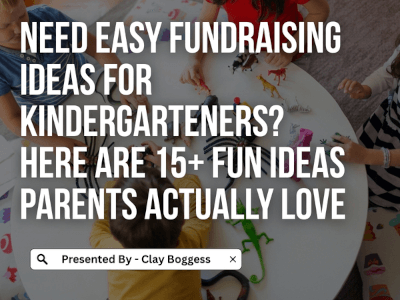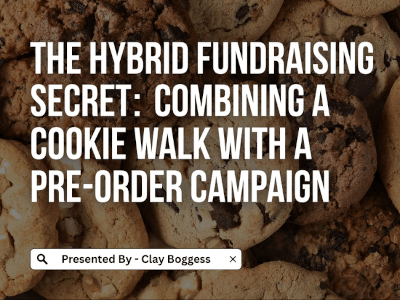
Learn how your school can experience a free big event fundraiser.
Schools that regularly use our big event fundraising prize programs are acutely aware of the many advantages they offer compared to standard elementary school prize plans. There are also some potential obstacles that some schools will face as well. Big event incentives are not for every school. However, this article will describe two unique ways that some schools might be able to overcome those hurdles.
Many sponsors are moving away from the usual prize program that rewards a few students but always seems to leave everyone else out in the cold. Most students end up not selling anything once they realize how difficult it is to get the prize they want.
Those few students who sell a lot get rewarded; however, the majority realize how hard it is to win better prizes. They either become discouraged after selling a few items or don't bother selling anything.
On the other hand, with a big event incentive plan, every student who sells just a few items from their fundraising catalog gets to trade in their cheap toy for the privilege of gaining free admission to an exciting event that comes to their school.
The requirements for going to the event are simple. Sell five items and go to a magic or reptile adventures show. If the school chooses the super party or super splash party incentive, they must sell eight items. If you were a student, would you instead attend an exciting event with your friends or get that inexpensive prize in your box that your parents can easily pick up at the dollar store?
Learn why big event incentives boost catalog fundraising sales
There's also an educational benefit if schools choose a curriculum-based magic show or reptile show. However, what if your school has to contend with one or maybe both of the following situations?
1. Smaller School Enrollment
You're a smaller elementary school, and I wonder if you can meet the minimum dollar amount to receive your event for free.
We've had smaller schools raise enough money to qualify for a free big event; smaller schools typically average more items sold per student. This can help; however, there is a point where a school may not have enough students, no matter how much they sell. If you fall into this category, there are a couple of options to consider.
- Choose a traditional prize program. Even though there are still item minimums that must be met, the prizes will always be free.
- Select what we call 'Option B'. See how to qualify for a free big event. This allows the school to take a conservative approach to qualifying for a big event. With Option B, the school starts with a traditional prize program. Then, if the school reaches the minimum sales goal, they automatically graduate up to the big event they select ahead of time.
In addition, the school can do what we call 'changing your mind'. If you initially choose Option B, schools can still switch to a big event even if they fall short of the sales goal. Several schools have done this, and their sales were much higher than they thought. They are still promoting their big event under the condition that the school reaches its goal. As a result, they realize that the cost share amount is doable.
Remember that if the cost share becomes necessary, the money comes from the school profits. In other words, the school has already raised this extra money and doesn't have to obtain it from an external source.
2. Below Average Fundraising Sales History
Your student enrollment is adequate; however, your sales history hasn't been that good.
- With your previous brochure fundraiser, you probably used a traditional prize program. When you compare the results from a big event fundraising prize program to a traditional program, sales have been proven to improve with the former significantly. Be careful not to compare your sales history with what your sale could be with a big event incentive. You're comparing apples and oranges to what your sales could be.
- If your school has historically performed poorly using a traditional prize program, it may be a good idea to go back and look at why this may have occurred. For example, you may have had your fundraiser right after a nearby school made its sale, or perhaps you didn't promote your sale enough.
- You still have Option B available as a fallback plan.
If you're looking for additional ways to enhance your sale, consider these questions to consider when developing fundraising strategies.
Our primary goal is to have as many schools experience a big event prize program as possible. As a result, we have created several ways to help you get there. Once you've had one, you won't want to return to last year's prize program.
Author Bio
Clay Boggess has been designing fundraising programs for schools and various nonprofit organizations throughout the US since 1999. He’s helped administrators, teachers, and outside support entities such as PTAs and PTOs raise millions of dollars. Clay is an owner and partner at Big Fundraising Ideas.



